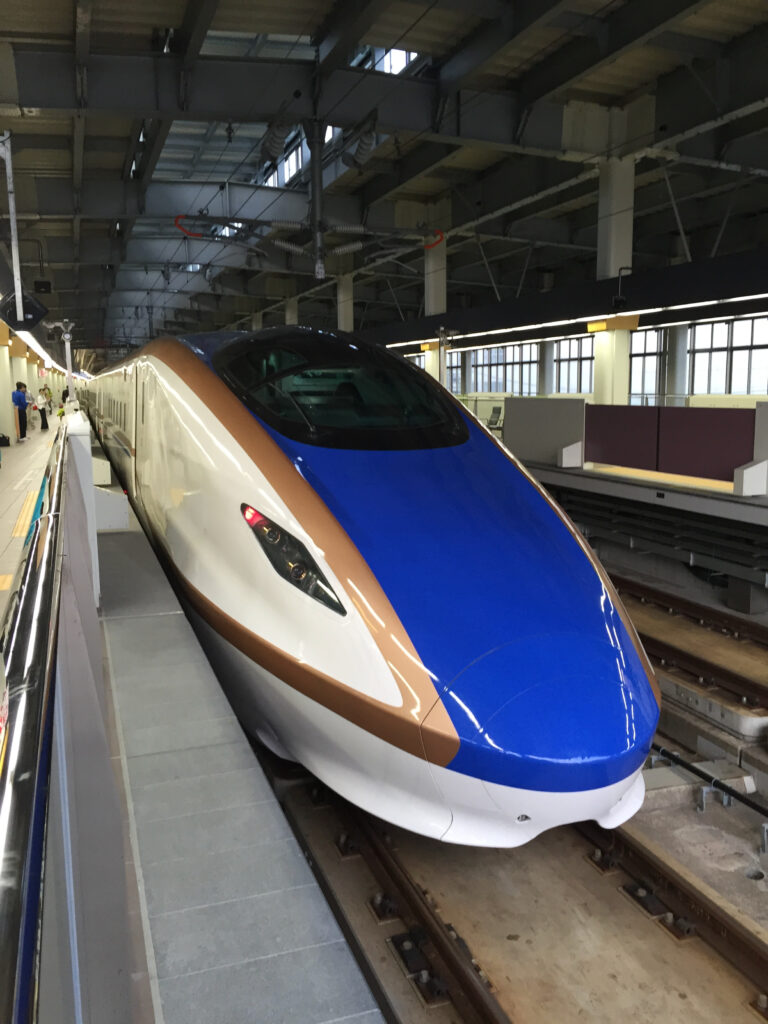■
■■ 国際協力学専攻
■■■ 中田啓之 教授
■■■■
我が家も束の間であったが、ゴールデンウィーク中の3日間で石川県の能登地方にある妻の実家に鉄道を利用して帰省した。北陸新幹線の金沢開業から早くも7年であるが、東京から金沢までの行程は、乗り換えなしで2時間半あまりのものとなり、開業以前とは雲泥の差がある。
金沢から能登方面に向かう鉄道は、引き続きJR西日本の七尾線と北陸新幹線の金沢開業とともに第3セクター化された北陸本線であるが、最近、普通列車にも新型車両が導入された。ワンマン運転化され、IC乗車券も利用可能になったが、いまやほとんどの駅が無人駅だ。また、直流区間と交流区間をまたぐ路線であり、(私はいわゆる「模型鉄」だが)鉄道オタクとしては、一瞬、車内照明が消えるデッドセクションを通過するのも楽しいものである(柏からすぐ近くの常磐線区間にもデッドセクションがありますが)。
ところで、今年は日本での鉄道開業150周年である(開業150周年を記念した駅スタンプラリー・WEBアプリもありますよ!)。当初は、蒸気機関車等の車両をはじめ、線路やプラットホーム等の設備、あるいは運行のノウハウまで英国人技師の指導を受けていた影響もあり、プラットホームの高さも英国式になったと聞く。京都鉄道博物館で保存されている国産初の量産型蒸気機関車である230形233号機は、英国の蒸気機関車の設計を踏襲しているのが明らかだが、いまや逆に日本で設計された車両が英国で導入されているのも面白いものである。
とりとめのない話になってしまったが、ともあれ、日本国内をはじめ、世界各地の鉄道や鉄道模型店を気軽に訪れることができるようになって欲しいものである。
During the Golden Week holiday, to visit my wife’s family we took a short trip to the Noto region of Ishikawa Prefecture for three days by train. Seven years have already passed since the Hokuriku Shinkansen’s extension to Kanazawa, which transformed the journey from Tokyo to Kanazawa dramatically – it now takes only just over two and a half hours, and is without having to transfer.
The railway serving from Kanazawa to Noto continues to be the JR West’s Nanao Line and the Hokuriku Main Line, now run by a third-sector railway following Hokuriku Shinkansen’s extension to Kanazawa, but new trains have recently been introduced to the local service, too. While the local service is now one-man-operated and takes IC cards/tickets, most stations are unmanned these days. The line straddles the AC and DC overhead line sections, and as a ‘railway geek’ (mind you though that I am really a model railway enthusiast), I enjoy passing through the AC/DC dead section where the interior lights go out momentarily (there is a dead section for the Joban Line near Kashiwa as well).
By the way, this year marks the 150th anniversary of railways in Japan (there is also a stamp-rally WEB app to commemorate the 150th anniversary!). Ranging from the rolling stock such as steam locomotives and facilities such as tracks and platforms to operational know-how, Japan’s railway system was originally supervised by British engineers, and as a result it is said to be heavily influenced by the British system – including even the platform height. While Type 230 No. 233, the first mass-produced steam locomotive in Japan, currently preserved at the Kyoto Railway Museum, clearly follows the British steam locomotive design, it is interesting that Japanese designed trains are now operating in Britain.
It has become a small talk really, but I hope that we will soon be able to casually visit both railways and model railway shops in Japan and in other parts of the world.






